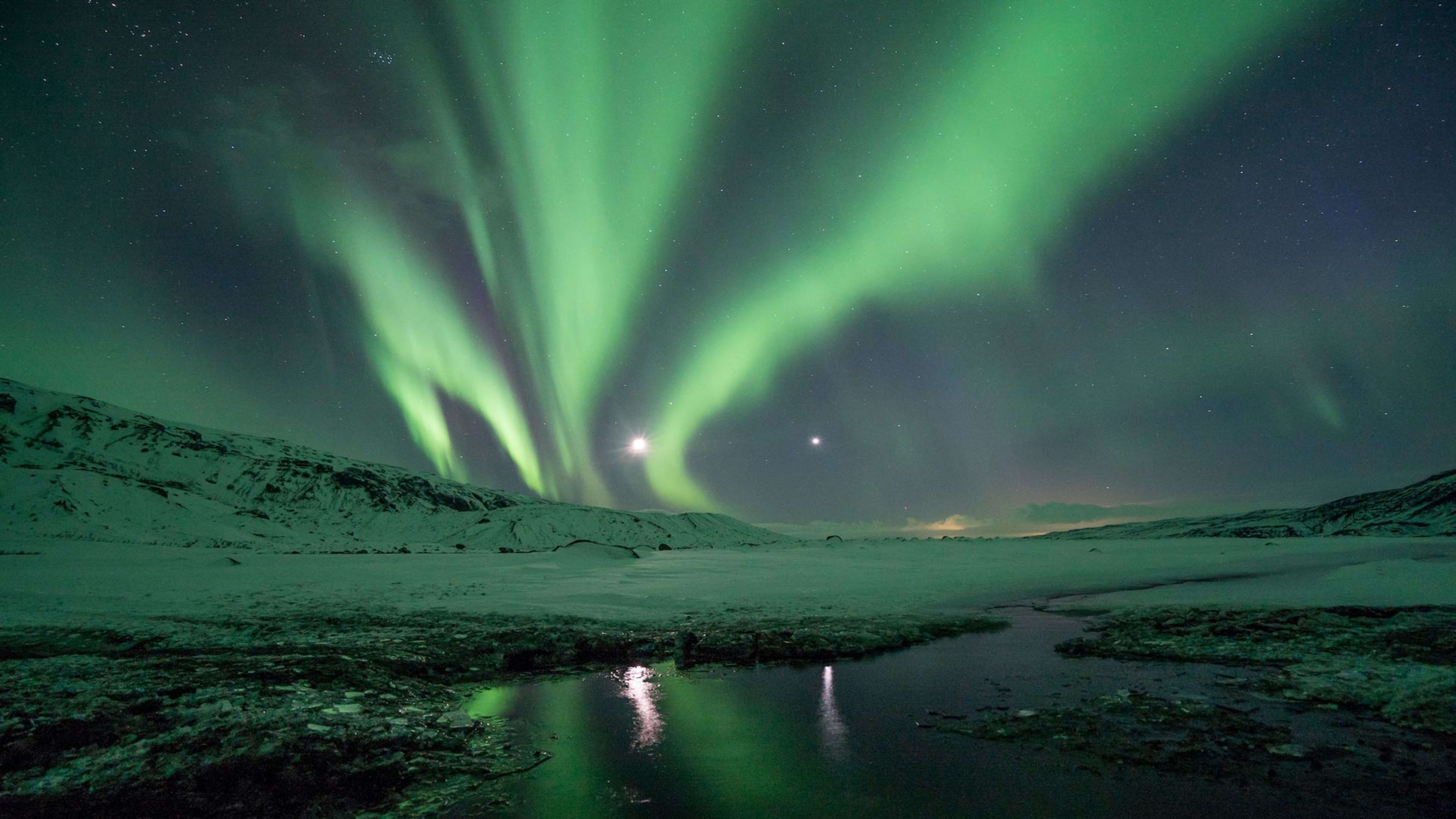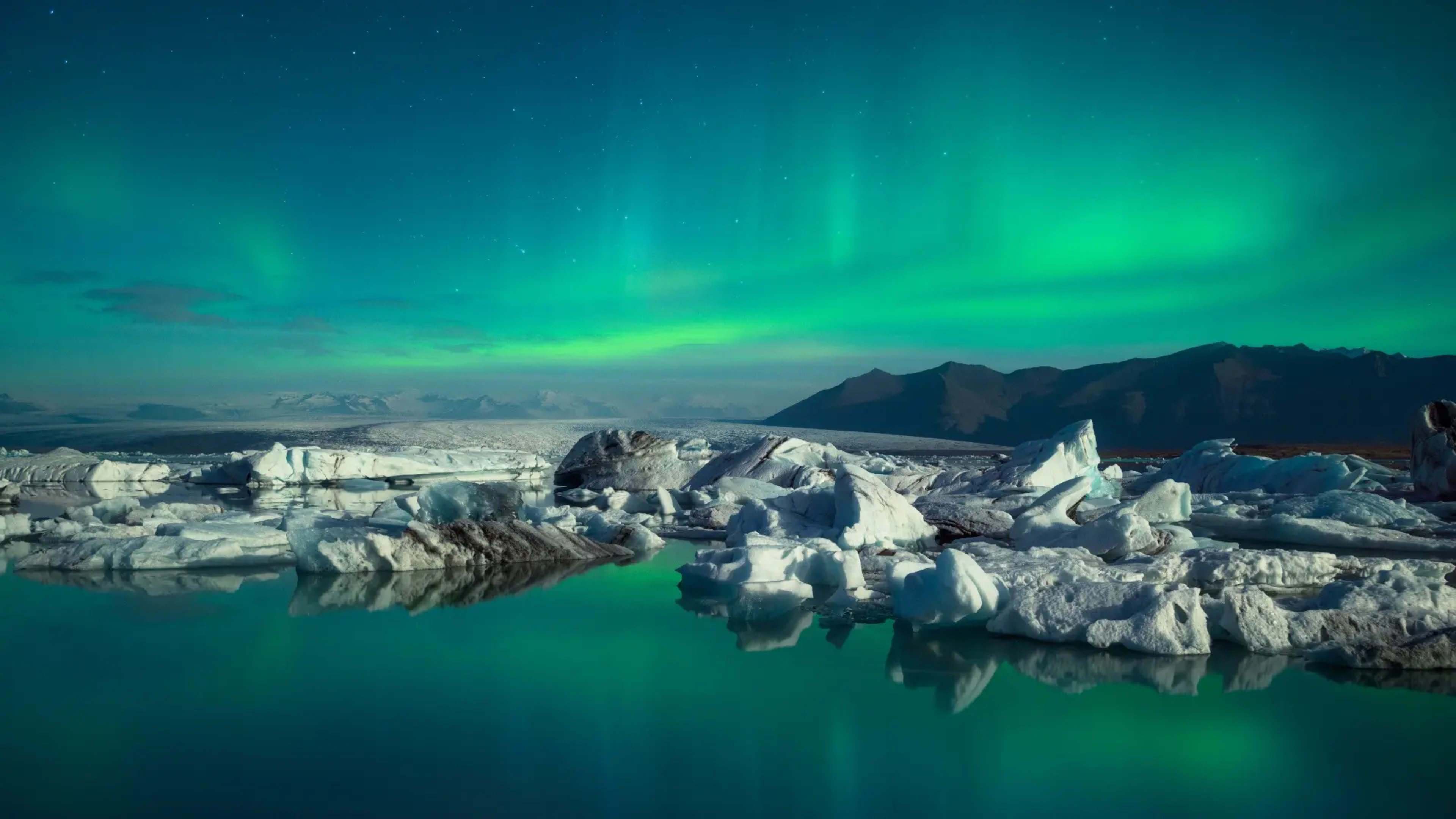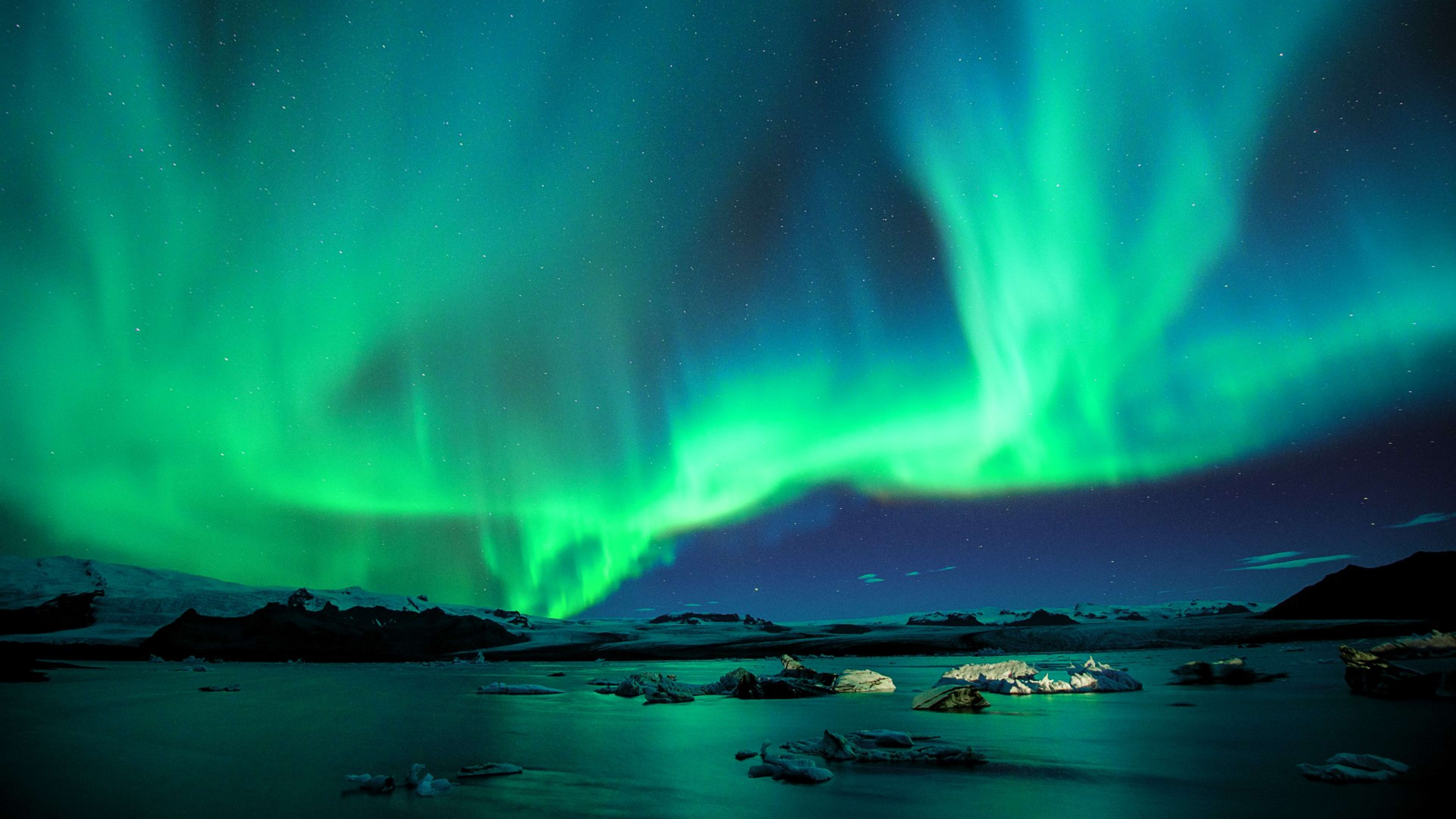If you’re visiting the Land of Fire and Ice, there might be one particular thing on your bucket list: the Northern Lights. You’re not alone. This natural spectacle has been enchanting us since the time of the Vikings, and with one glimpse of the auroras’ ethereal beauty, it’s easy to see why.
The Aurora Borealis can be unpredictable, as it’s a natural phenomenon. But by finding the best place to see the Northern Lights in Iceland, you’re setting yourself up for the chance to witness this unforgettable light show.
- Check out these Northern Lights tours in Iceland.
Read on to discover the best spots for Northern Lights in Iceland, and get insider advice on how to seek them out. Even if the Aurora Borealis elude you, these locations are still beautiful and well worth seeing when you’re planning a trip to Iceland.
1. Vatnajökull National Park
To combine Arctic landscapes with truly wild nature and the potential to see the Northern Lights, Vatnajökull National Park is where you should head to.
This huge nature reserve features the impressive Vatnajökull glacier at its heart and is encircled by active volcanoes, waterfalls, and rivers. Dramatic cliffs, swooping ravines and fierce blue ice caves beside black sand beaches make Vatnajökull National Park feel like you’re in the Ice Age.

As Vatnajökull National Park is so open and has very low levels of light pollution, it’s a great place to see the Northern Lights. Watching the colorful ribbons appear over the glaciers and snow-capped hills is an experience that you can’t replicate.
- Related: Iceland in winter – your guide.
The national park does require factoring in travel time if you’re flying into Reykjavík. Vatnajökull is approximately 320 km (200 mi) from the capital – between 4 and 7 hours drive depending on weather conditions.
The journey is definitely worth it though, as this is truly one of the greatest wonders of Iceland. Make your drive out to the national park an adventure in itself. Stop along the way to visit places like Vík, Skógafoss, and the black sands and hexagonal basalt columns of Reynisfjara beach.
Explore Vatnajökull in winter, and you could also discover natural glacial caverns on an ice cave tour package.
- Travel independently on a self-drive tour of Iceland in winter.
2. Seltjarnarnes in Reykjavík
Perhaps you’re staying in Reykjavík and are keen to see the Northern Lights, but wondering if it’s even possible in the capital city? Fortunately, Reykjavík has a hidden gem, the town of Seltjarnarnes, that you could seek out.
Seltjarnarnes is set almost out into the sea, as it sits on the most westerly edge of Reykjavík. This means it has much lower levels of light pollution compared to the city itself.
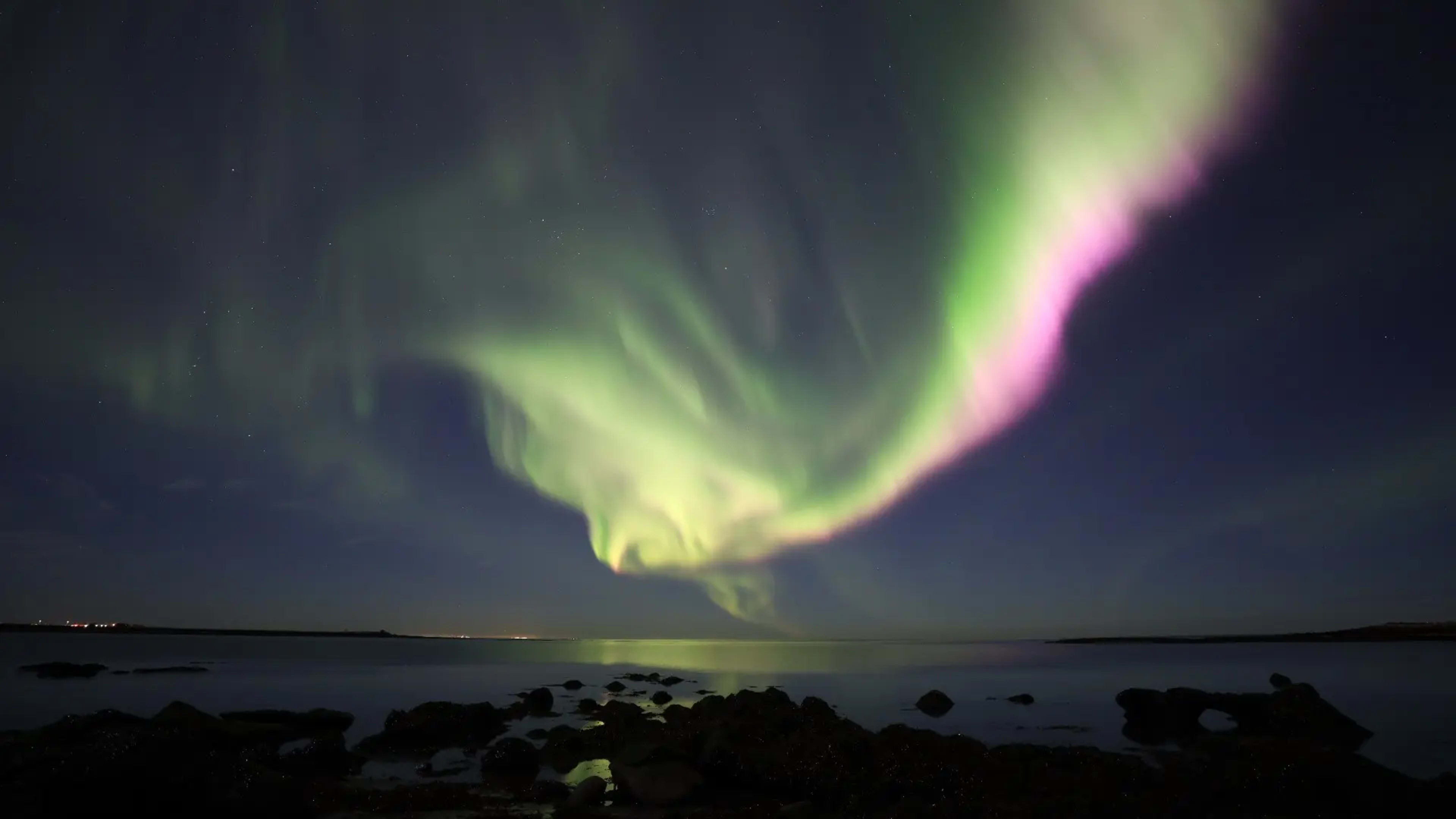
Head out to Grótta Lighthouse, or the Seltjarnarnes golf course, where there’s even a dedicated Northern Lights viewing point. Both spots are only a 10-minute drive from the center of Reykjavík, making them ideal for working into a city break.
This can be a great option if you happen to see that the forecast for the lights is good and you want to catch a glimpse. Simply hop over to Seltjarnarnes and try your luck!
- Look for the Northern Lights on a multi-day tour from Reykjavík.
3. Snæfellsnes peninsula
Snæfellsnes, home to the jaw-dropping Snæfellsjökull National Park, demonstrates all that Iceland has to offer: glaciers, volcanoes, lakes, geothermal pools, rugged landscapes, and more. Whether you see the Northern Lights or not, this attraction-packed peninsula in West Iceland will amaze you.
There are plenty of places where you can set up camp to watch for the Aurora Borealis. Head to Ytri Tunga beach, a gold sand beach that makes for a beautiful lookout point with its open view out to sea.

For an iconic Icelandic backdrop, choose Kirkjufell mountain to photograph the Northern Lights. You might recognize it from Game of Thrones.
Or, for sea views, visit the fjords of Breiðafjörður or Kolgrafafjörður. Here you can marvel at the ocean, islands and snow-capped hills stretching out before you.
4. Þingvellir National Park
Þingvellir (Thingvellir) National Park straddles two continental tectonic plates, and this titanic power has shaped the landscape of Iceland. With ravines, cliffs, waterfalls, volcanoes, and lava fields, Þingvellir offers plenty of opportunity to explore.
You can see why it’s a UNESCO World Heritage Site. That’s before you learn it’s the location of the world’s oldest surviving parliament, Alþingi, dating to 930 AD!
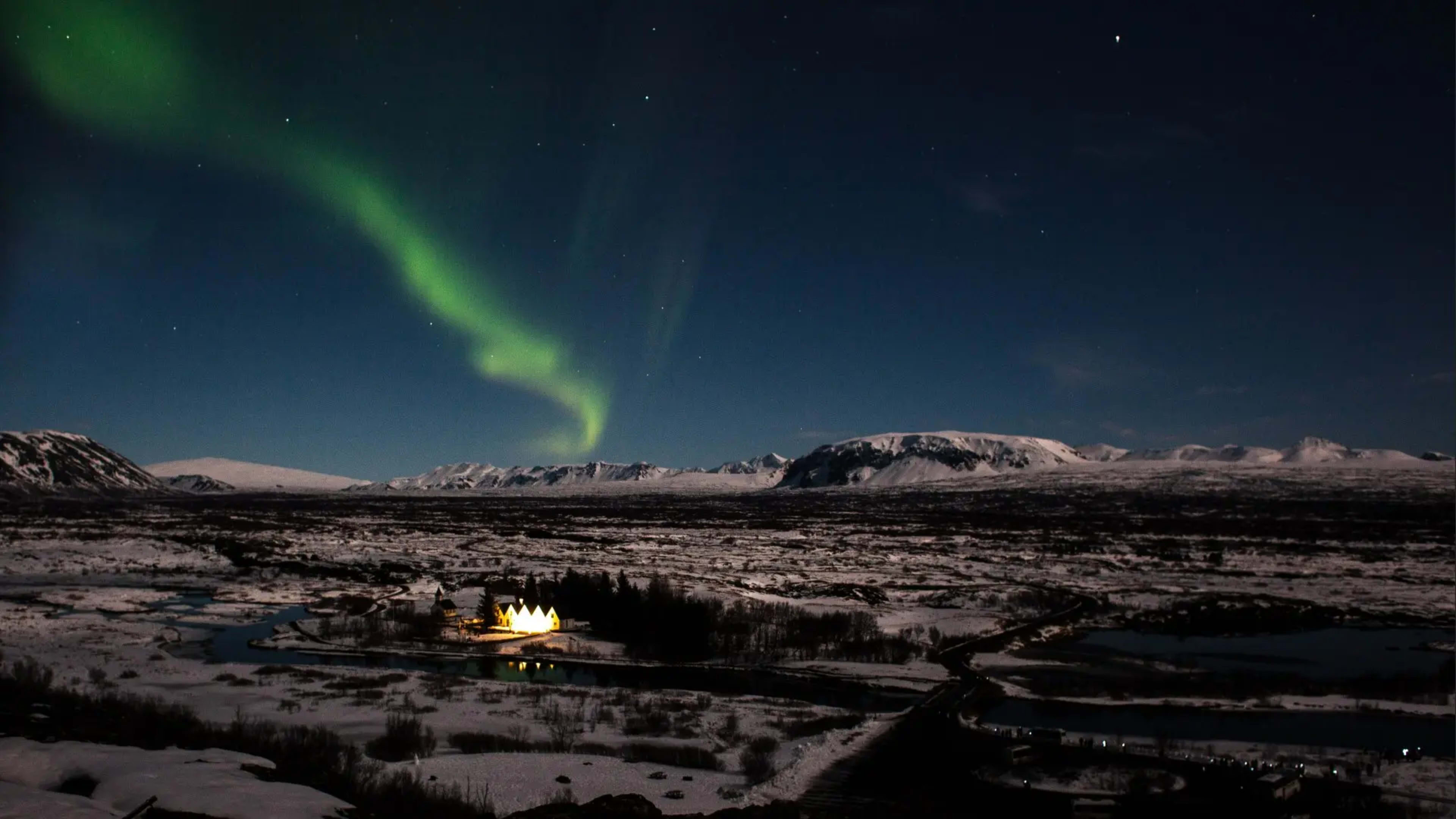
Much of Þingvellir National Park sits on the famous Golden Circle. Encapsulating the beauty and heritage of the country, the Golden Circle is an absolute must-do when you’re visiting Iceland.
Gullfoss, one of the largest waterfalls in Iceland, is part of the Golden Circle route and provides an incredible backdrop. Travel out further for the chance watch the Northern Lights appear over the Silfra fissure and rocky lava plains.
Þingvallavatn, Iceland’s largest lake, also makes for the perfect site to embark on a Northern Lights hunt. Seeing the colors of the aurora reflected back into the water is a bonus sight for you.
It’s good to know that Þingvellir National Park is close to Reykjavík – around 50 km (31 mi) from the capital. So if you’re based in the city, you can quite easily drive out to catch the aurora.
Do be mindful about driving in Iceland in winter, particularly if you’re inexperienced on snowy roads.
- Let someone else do the driving on a privately guided trip or small group tour of Iceland.
5. Westfjords and North Iceland
The Westfjords and North Iceland are two of the most untouched regions of this country. These areas are less visited compared to South Iceland, as they aren’t as easy to reach from Reykjavík.
Venture here and you’ll get to see some of Iceland’s most pristine scenery, so you won’t regret the extra travel time. And they are the closest parts of the country to the Arctic Circle, so here you’ll find yourself inside the “Northern Lights Belt” where aurora activity is strongest.
Thanks to being sparsely populated regions, the Westfjords and North Iceland have some of the lowest levels of light pollution in Iceland. So you’re guaranteed dark night skies in winter for a stunning backdrop to the Northern Lights.
- Related: Ultimate guide to the Westfjords.
- Seek out the Northern Lights on one of these North Iceland & Akureyri tours.
In the Westfjords, you’ll discover tall cliffs, wide-open beaches and natural carved waterfalls such as Dynjandi and Vascofoss. Wherever you choose to set up camp and wait for the Aurora Borealis, you’ll be surrounded by some of the country’s most rugged and wild landscapes.
Vatnsfjörður, a nature reserve with a geothermal hot spring, located right by the rural town of Flókalundur, is an ideal base for the Westfjords. Whereas over in the North Iceland, the route between Lake Mývatn and Akureyri blesses you with lunar-like nature and very little light pollution.
Should you decide to visit the Westfjords and North Iceland, you could make it a full tour of the Ring Road. There’s so much to see and experience in Iceland, driving around the country will help you to make the most of your time here.
Plus, as a general rule of thumb, the longer you stay in Iceland, the better your chances are of spotting the Northern Lights!
Top tips for hunting the Aurora Borealis in Iceland
Aside from finding the right place to look for them, there are more ways you can increase the likelihood of catching sight of the Northern Lights.
Best time to see the Aurora Borealis
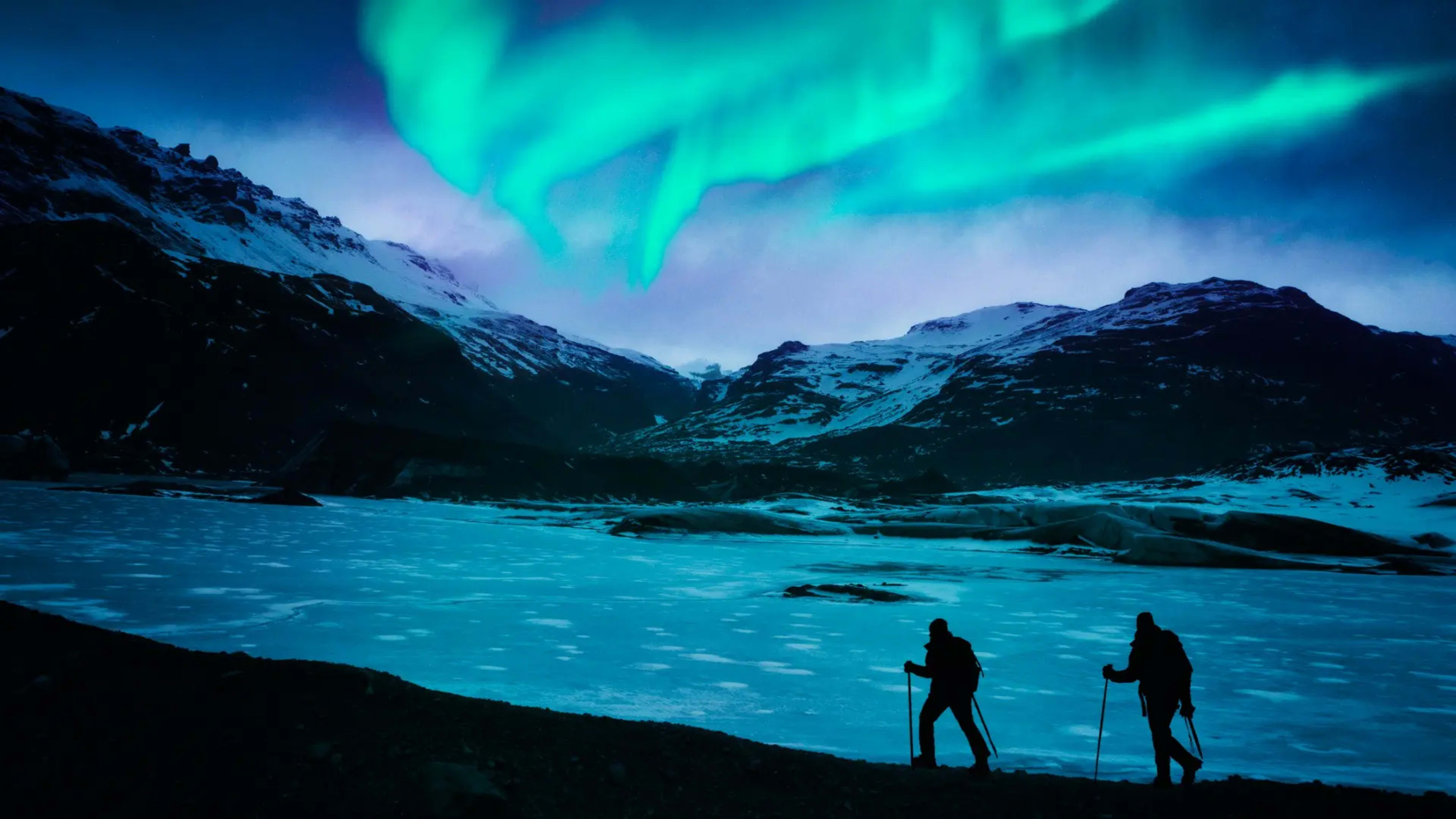
Winter – October to March – is the best time to go aurora hunting. The nights are much longer in the winter months, giving you a better chance of seeing it.
Northern Lights displays are usually between 15 and 30 minutes. Some are shorter, some longer. Whether you see them for 5 minutes or 50, catching a glimpse of the aurora is one of the most incredible natural displays to witness.
- Check out winter vacations in Iceland.
Advice for chasing the Northern Lights
Tick these off your list to ensure you get the best opportunity to see the Northern Lights:
- Clear skies – with no cloud cover.
- Darkness – preferably with low levels of light pollution and moonlight.
- Calm weather – no snow or rain.
- Solar wind or solar activity – this is because particles in the atmosphere are what cause the beautiful displays.
- Patience – the lights are unpredictable, but well worth the wait.
- Northern Lights tour – local guides will take you to the best places to see the light show.
There are also many apps you can download that track solar activity and the aurora forecast. These can help you decide where to see the Northern Lights in Iceland.
For those lucky enough to see the Northern Lights, it is truly an unforgettable sight. Although there is a great deal of luck involved, choosing where to see the auroras in Iceland can make a big difference.
Not only can it increase your chances of getting the best view, but with so much wild Icelandic scenery around you, the experience becomes magical in ways you wouldn’t expect.
If you miss out on viewing the Northern Lights on this occasion, there’s no need for concern. Instead, see it as a chance to explore more of Iceland’s beauty and get to know this wonderful country a little better!
Tick seeing the Aurora Borealis off your bucket list with the help of Iceland Tours’ local experts. They’ll make your travel plans and ensure you’re ready to see the Land of Fire and Ice up close and personal.
You’ll have a dedicated travel consultant to arrange everything to make your Iceland Northern Lights trip seamless, including accommodation, transport, and activities. Secure your booking with as little as 5% deposit today and prepare for a special adventure!


